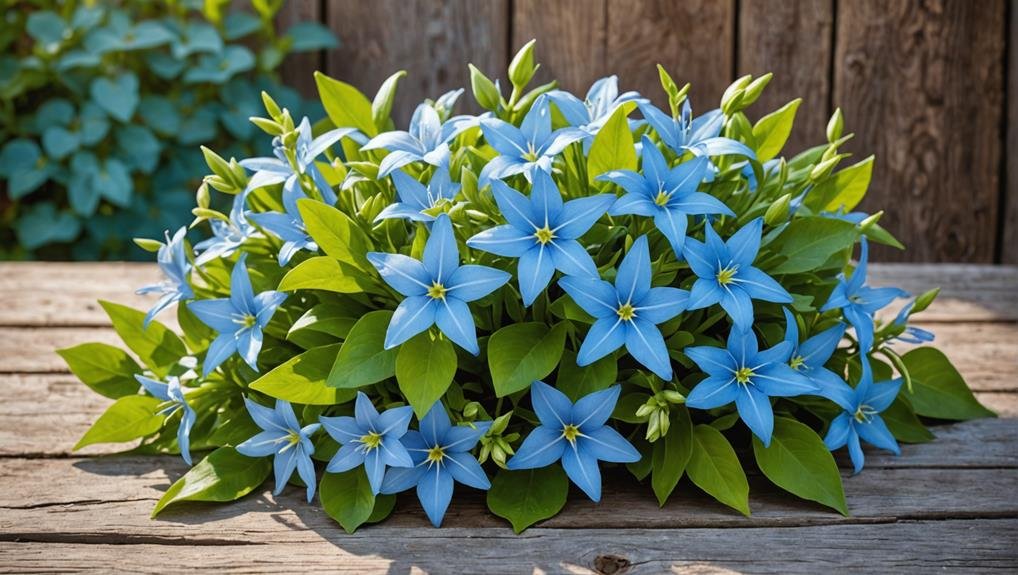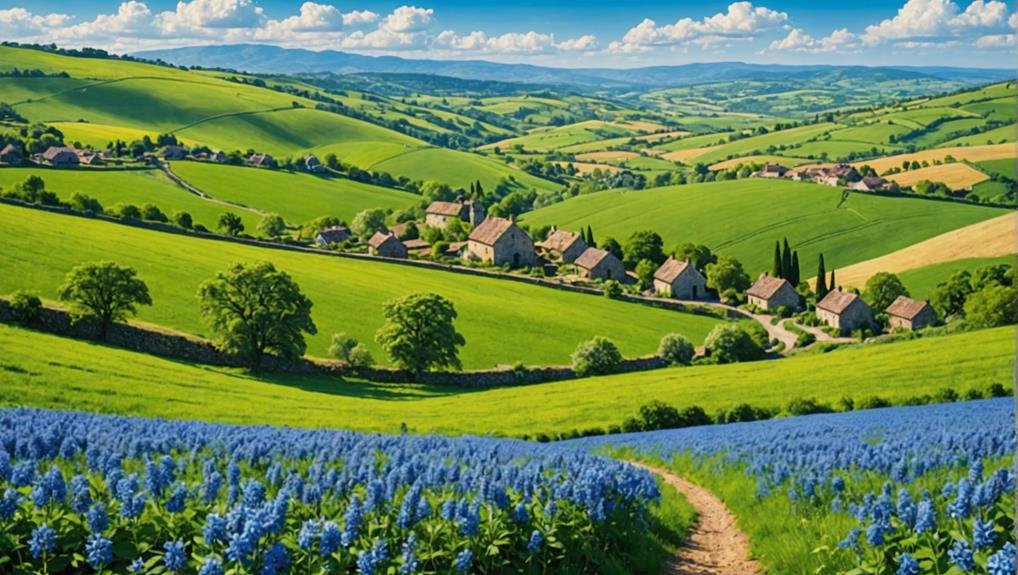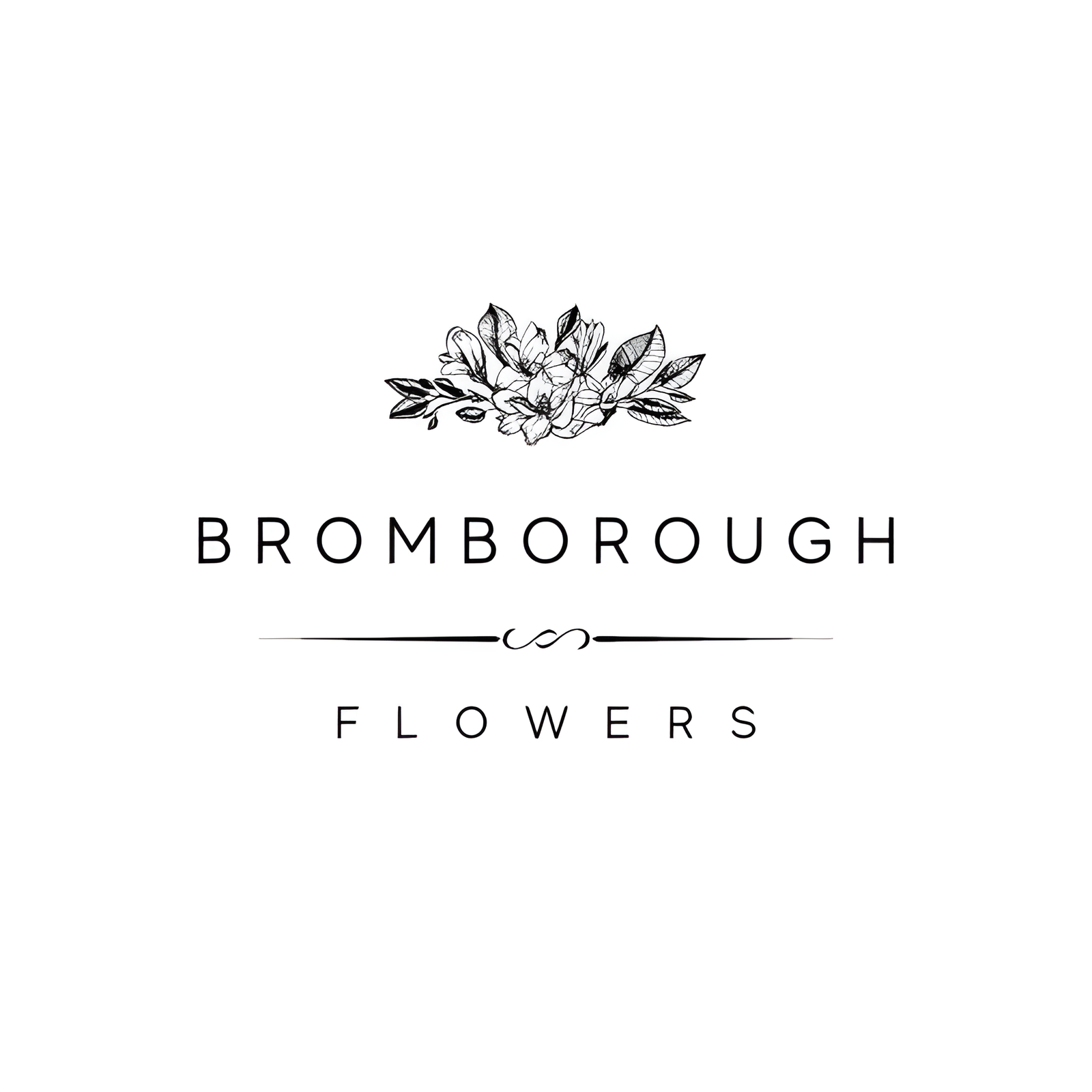When planning the perfect wedding, selecting the right flowers is paramount, and Tweedia offers a unique blend of elegance and tranquility. Renowned for its soft blue hue and delicate petals, Tweedia's aesthetic appeal and symbolic meaning of serenity and happiness make it a favored choice among brides. Its versatile nature allows it to be incorporated seamlessly into bridal bouquets, boutonnieres, and garden-style arrangements. But what truly sets Tweedia apart? Understanding its origins, growing conditions, and cultural significance can provide deeper insights into why this flower could be the ideal addition to your special day.
Flower Overview

Tweedia flowers are delicate, soft blue blooms that add a luxurious touch to bridal bouquets and event arrangements. Perfect for the DIY Floral enthusiast, Tweedia serves as a luxury accent flower, bringing an elegant touch to any floral setup. Known for their exquisite appearance, these delicate flowers are especially popular for adding 'Something Blue' to wedding themes, seamlessly blending with blush pinks and other pastel hues.
Ideal for brides crafting their own floral arrangements, Tweedia can be incorporated into bridal bouquets, bridesmaids' posies, boutonnieres, corsages, and centerpieces. These flowers are versatile and can be combined with a variety of colors to create a harmonious and sophisticated look. Their soft blue shade provides a unique and understated elegance, making them a preferred choice for those looking to add a touch of luxury to their special day.
Incorporating Tweedia into your wedding design not only enhances the visual appeal but also emphasizes the thoughtful selection of high-quality, sophisticated blooms. Their delicate nature requires careful handling, but the resulting aesthetic is well worth the effort, ensuring a memorable and stylish floral display that aligns with the elegance of the occasion.
Physical Description
Renowned for their charming appearance, these flowers exhibit soft blue petals that create a soothing and luxurious ambiance in any floral arrangement. Tweedia flowers are particularly celebrated for their sweet, delicate blooms, which exude a whimsical and elegant charm. The soft blue shade of the petals complements a variety of other colors, making Tweedia a versatile choice for wedding bouquets and decor.
The blooms of Tweedia are small and star-shaped, lending a light and airy feel to floral designs. These delicate flowers can effortlessly blend with blush pinks and other pastel tones, adding a romantic touch to any arrangement.
However, one unique characteristic of Tweedia is the sticky white milky substance that is released from the stems when cut. This is a normal trait and does not affect the flower's aesthetic appeal or functionality.
To maximize the vase life of Tweedia flowers, it is advisable to give the stems a fresh cut and place them in cool water. Additionally, keeping the arrangements in a cool location will help maintain their freshness and prolong their beauty, ensuring they remain a stunning element of your wedding decor.
Available Colour Varieties

Among the available color varieties, the soft blue hue of Tweedia flowers stands out for its ability to infuse wedding arrangements with a sense of tranquility and elegance. The blue Tweedia is particularly favored for its serene and happy aura, making it an ideal choice for bridal bouquets and luxury accents in wedding decor. This gentle blue tone seamlessly integrates into various color palettes, enhancing the sophistication of floral arrangements.
In addition to the popular blue Tweedia, the white Tweedia offers an alternative that symbolizes purity and innocence. The white variation is perfect for brides seeking a classic and timeless look. Combining blue and white Tweedia flowers can create a harmonious blend that represents both love and new beginnings, enriching the symbolic depth of wedding decorations.
The versatility of Tweedia flowers in both blue and white makes them a valuable addition to any wedding theme. Their star-shaped buds add a touch of luxury and sophistication, elevating the overall aesthetic of the event.
| Color | Symbolism | Ideal Use |
|---|---|---|
| Blue Tweedia | Serenity, Happiness | Bridal Bouquets, Luxury Accent |
| White Tweedia | Purity, Innocence | Classic Wedding Decor |
| Blue & White Mix | Love, New Beginnings | Symbolic Floral Arrangements |
| Soft Blue | Tranquility, Elegance | Sophisticated Color Palettes |
| White | Timelessness | Traditional Themes |
Latin Name and Taxonomy
Understanding the botanical classification of Tweedia offers insight into its unique characteristics and origin. Belonging to the Apocynaceae family, Tweedia is scientifically known as Tweedia caerulea. This delicate plant is commonly referred to by charming names such as Blue Milkweed and Southern Star, reflecting its ethereal beauty and star-shaped flower structure.
The genus Tweedia is quite exclusive, comprising only two species:
- Tweedia caerulea: Known for its striking blue flowers, this species is the more widely recognized and utilized variety in floral arrangements.
- Tweedia birostrata: This species showcases white blooms, adding a different yet equally enchanting element to the genus.
- Apocynaceae Family: Tweedia belongs to this larger family of flowering plants, which includes various other ornamental and medicinal species.
- Star-shaped Flower: The blooms of Tweedia are particularly noted for their distinctive, star-like appearance, which makes them a favorite in wedding bouquets and decorative floral designs.
These features not only enhance its aesthetic appeal but also underscore its botanical significance. Tweedia's taxonomy and nomenclature reflect its delicate nature and ornamental value, making it a prized choice for various occasions, especially weddings.
Geographical Origins

Tweedia flowers originate from the warm and tropical climates of South America, specifically Brazil and Argentina. Known scientifically as Oxypetalum coeruleum, these delicate blooms belong to the milkweed family and are often referred to as blue milkweed.
The geographical origins of Tweedia flowers play a significant role in their thriving nature, as they are accustomed to the temperate and humid conditions typical of tropical regions. The native habitats of Brazil and Argentina provide the ideal environment for Tweedia flowers to flourish, thanks to their warm temperatures and consistent moisture levels.
This natural affinity for tropical climates makes Tweedia flowers particularly resilient and well-suited for cultivation in similar conditions worldwide. The unmistakable soft blue shade of Tweedia flowers has garnered them considerable popularity in various floral arrangements, especially in DIY bridal bouquets.
The unique hue and delicate structure of these blooms add a touch of elegance and charm, making them a favored choice for brides seeking a distinctive floral accent. Understanding the geographical origins of Tweedia flowers not only highlights their natural beauty but also underscores the importance of their ideal growing conditions in tropical regions.
Season Availability
Given their origins in the warm climates of South America, Tweedia flowers are typically available from late spring through early fall. This season availability aligns with the period of warm weather that is ideal for their growth, making them most abundant during the summer months. As you plan your wedding floral arrangements, understanding the peak season of Tweedia can guarantee their best inclusion in your design.
Here are some key points to contemplate regarding the season availability of Tweedia:
- Late Spring to Early Fall: Tweedia flowers are generally available from late spring through early fall, coinciding with their natural growing conditions.
- Summer Abundance: Tweedia thrives and is most prolific during the summer months, making it a perfect choice for summer weddings and events.
- Regional Variations: While Tweedia is widely available during its peak season, availability can vary based on regional and local growing conditions.
- Wedding Planning: When incorporating Tweedia into your wedding flower arrangements, take into account its season availability to guarantee that these beautiful blooms are at their peak.
Growing Conditions

For ideal growth, Tweedia flowers need full sun to partial shade, well-draining soil, and good air circulation. These conditions ensure that the plants get the necessary light for photosynthesis while avoiding excess moisture that can cause root rot.
Full sun exposure is particularly important, as it encourages strong growth and abundant blooming. However, partial shade can be beneficial in very hot climates to prevent leaf scorching.
Tweedia flowers thrive in well-draining soil, which is essential for preventing waterlogged conditions that could harm the roots. Good air circulation around the plants helps reduce the risk of fungal diseases and promotes healthy growth.
Once established, Tweedia plants are drought tolerant, making them a resilient choice for gardens and landscapes that face dry spells. However, regular watering during the initial growth phase is necessary to establish a strong root system.
These adaptable flowers can be grown in containers or hanging baskets, making them suitable for various garden designs and spaces. Additionally, Tweedia blooms are known to attract pollinators like bees and butterflies, enhancing the ecological value of your garden.
Their ability to support pollinators adds an extra touch of charm to their already attractive appearance.
Cultural Significance
Renowned for their delicate blue blooms, these flowers hold a significant place in cultural traditions, symbolizing peace, tranquility, and new beginnings. The tweedia flower, native to South America, has been embraced in various ceremonies and rituals, reflecting its versatile symbolic meanings.
In many cultures, tweedia flowers are cherished for their ability to evoke positive energy and serenity. Their presence is believed to foster a sense of calm and well-being, making them a popular choice for events that mark significant life shifts.
The symbolism of tweedia flowers can be captured through the following key points:
- New Beginnings: Tweedia flowers are often used in ceremonies that celebrate fresh starts, such as weddings and baptisms, signifying hope and renewal.
- Peace and Tranquility: The calming blue hue of tweedia is associated with peace and tranquility, providing a sense of serenity to those who encounter it.
- Purity and Innocence: White tweedia flowers, in particular, are utilized in religious ceremonies to represent purity and innocence, underscoring their spiritual significance.
- Positive Energy: Incorporating tweedia flowers into various settings is thought to enhance positive energy, creating an uplifting and harmonious atmosphere.
This multifaceted symbolism underscores the cultural importance of tweedia, making it a cherished addition to various ceremonies and celebrations.
Typical Use in Weddings

Building on their cultural importance, tweedia flowers have become a beloved choice for various aspects of wedding floral arrangements. Known for their delicate and elegant touch, tweedia flowers are particularly popular among DIY wedding planners. Their gentle blue hue adds a subtle yet striking burst of color, making them ideal for bridal bouquets and bridesmaid arrangements.
The graceful appearance of tweedia ensures they blend seamlessly with blush pinks and other pastel shades, creating a romantic atmosphere that is both enchanting and timeless.
In addition to bridal bouquets, tweedia flowers are often used in boutonnieres and corsages, providing a cohesive floral theme throughout the wedding party. Their versatility extends to centerpieces, where they contribute to crafting enchanting garden-style arrangements. These arrangements are perfect for couples seeking to evoke a lavish yet organic aesthetic in their wedding decor.
The flowers' gentle blue shades can enhance the overall mood, making them an essential choice for those aiming to infuse their wedding with a touch of refined charm.
Alternative Flower Types
A variety of alternative flower types, including roses, peonies, ranunculus, and hydrangeas, offer diverse colors, shapes, and textures for enhancing wedding floral arrangements. Each of these flowers brings unique characteristics and symbolic meanings to wedding designs, allowing brides to craft personalized bouquets and centerpieces.
1. Roses: Known for their timeless elegance, roses symbolize love and romance. Available in a myriad of colors, they can be used in both classic and contemporary wedding arrangements.
2. Peonies: Celebrated for their lush, full blooms, peonies represent prosperity and good fortune. Their delicate petals add a touch of softness and opulence to any bouquet or centerpiece.
3. Ranunculus: These flowers are prized for their layered petals and vibrant hues. Symbolizing charm and attractiveness, ranunculus can add depth and variety to wedding floral designs.
4. Hydrangeas: With their voluminous clusters, hydrangeas symbolize gratitude and heartfelt emotions. Their broad color palette and textural appeal make them a versatile choice for creating impactful wedding arrangements.
Brides can mix and match these alternative flowers to achieve the desired aesthetic, ensuring their wedding bouquets are both beautiful and meaningful. By thoughtfully selecting these blooms, couples can enhance the overall ambiance of their special day.
